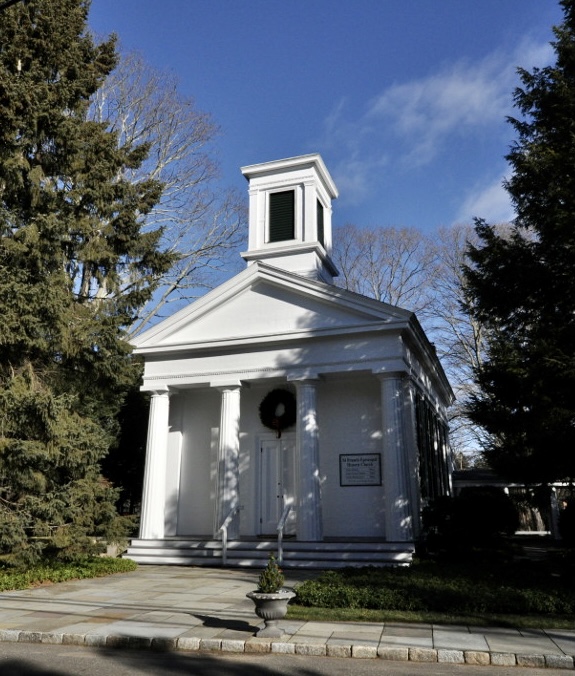The Birth of St. Francis Church
In 1942, Long Ridge Village Episcopalians saw an opportunity in the weeds of a dead parish. An abandoned Universalist Society church property stood deteriorating among overgrown weeds and grasses in the Long Ridge Village. Almost 200 years prior in 1776, the Universalist Society was planted in the Long Ridge Valley. This community flourished and in 1834 they erected the church property aforementioned. The church was built in classic revival architecture style to replicate a Greek temple, which was popular at the time because of the discovery of Pompeii. By 1942, the Universalist community had declined and the church was abandoned.
Meanwhile, a community of Episcopalians had grown and was flourishing in the Long Ridge Village, but the closest Episcopal church, St. John’s, was 20-miles round trip into Stamford proper. It was wartime and gasoline was being rationed, so it was too expensive for people to make this trip. In 1942, Long Ridge Village resident, Mrs. Harlan Logan, had the idea of “bringing the church to the people.” She brought her idea to the Rector of St. John’s, Rev. Stanley Hemsley, who helped her create a church in her backyard. As many as 40 people attended Mrs. Logan’s lawn services, but inclement weather motivated them to look for a more permanent solution.
Rev. Hemsley obtained permission from the Universalist Society in Danbury to use the unused property during winter months. Together Rector and congregants cleared the weeds and debris and cleaned up the inside of the church.
In 1945, two sisters, Mrs. Howard Gilmour and Mrs. Lucie Newton, bought the church property and gave it to the Diocese of Connecticut. Mr. Stanley Rowland and 25 people who had been attending church in Mr. Rowland’s home signed a petition to the Episcopal Bishop of CT for permission to establish a mission in the Long Ridge Village. The mission was approved and moved into its new church home to become St. Francis Church.
Working Group member, Suzanne Stevens, reflects on this history:
“I see this as St. Francis Church's early beginnings came about by people "re-imagining" church and bringing the church to the people! This was a group of forward thinking people who were our church's "ancestors" and a tradition that I hope we can continue.”
______________________________________________________________________
Bibliography:
Hanna, Helen. “History.” Introduction. In Favorite Recipes from St. Francis Parish, 1st ed. Stamford, CT: The Women of St. Francis , 1984.
Church, St. Francis. “History.” St. Francis Church. Accessed October 4, 2021. https://www.stfrancisstamford.org/about/history.
